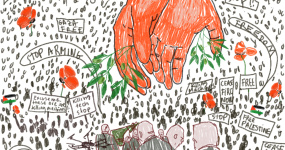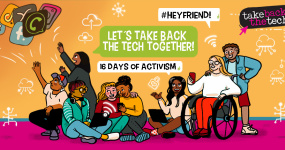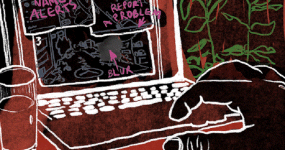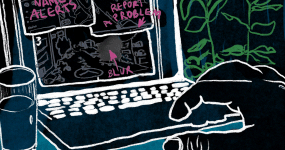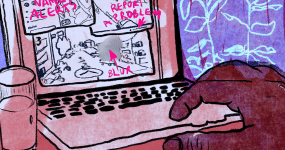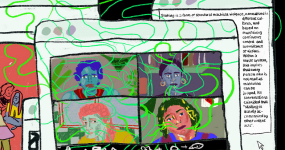DJ Outvertigo, who created a playlist for the Take Back The Tech! Liveboard in 2024 around critical issues of surveillance, tech fascism and AI geopolitics joined us for a lively conversation centered around the curated resources in their playlist — here.DJ Outvertigo is a Palestinian refugee researcher born and raised in Lebanon. She is researching surveillance in academia and…
DJ Outvertigo, who created a playlist for the Take Back The Tech! Liveboard in 2024 around critical issues of surveillance, tech fascism and AI geopolitics joined us for a lively conversation centered around the curated resources in their playlist — here.DJ Outvertigo is a Palestinian refugee researcher born and raised in Lebanon. She is researching surveillance in academia and…
Do you feel like someone is following you online, even though you may have blocked their profiles?Sometimes, the digital world may not be as friendly as we had hoped. In it, we may be surrounded by violence, discrimination, exploitation, abuse, harrassment and stalking - similar to the offline world. If you're feeling uncomfortable or as though your activities are being monitored and watched, we…
Stalking moves like water, from offline to online and back again. Many young girls and queer people face it as a real threat in their lives, from family and “friends” to the general online public who just may not like what they post online, or take an obsessive interest in their content and their lives.Online stalking also isn’t as simple as a few unwanted DMs online. It’s a series of targeted…
This is the fourth and final article in this series.Risk assessmentAll stalkers are not equal. Different stalkers have different motives and capabilities. Some want to keep their targets in a state of fear and anxiety but do not have the ability or opportunity to directly cause them physical harm. Some want to destroy the target’s reputation or relationships. Some have the means to use a…
Search for “How to spy on my spouse” on the internet (or replace “spouse” with “lover”, “girlfriend”, or “boyfriend”) and it reveals a disturbing reality. There are scores of results for persons who suspect their partners of infidelity, or are frustrated and heart-broken over an unexpected or messy break-up, or facing separation, divorce, or a child custody battle. The results demonstrate what…
This is the third article in this series. The previous articles explained stalkerware and how it may lead to image-based abuse, some popular techniques of stalking that involve commonly used apps, features, online services and devices, and potential countermeasures to them. Note: Searching for, removing or disabling the means of stalking may alert the stalker. This may potentially cause…
Note: Searching for, removing or disabling the means of stalking may alert the stalker. This may potentially cause the abuse to escalate, pose a risk to the target’s physical safety, and close their avenues to seek help or exit the relationship. If you are someone experiencing stalking or supporting someone who is, please assess the situation first. It is advisable to seek specialised…
“This violence is intersectional and may be accompanied by other forms of violence. A person can be physically followed, stalked, or spied on for subsequent threats. It all comes together. A holistic vision is needed to approach this work and undertake a risk assessment that tries to detect digital signals or others,” Marla from InterSeclab remarked in the Feminist Learning Circle: "…
Discrimination, abuse, exploitation, stalking, harassment, or cyberbullying reproduce gender-based violence and affect the offline lives of victims/survivors, evidencing the impact of virtual and technological spaces on everyday life. Online Gender-Based Violence (OGBV) is a continuation of offline violence, and it is increasingly widespread and malicious in patriarchal societies.A study…

